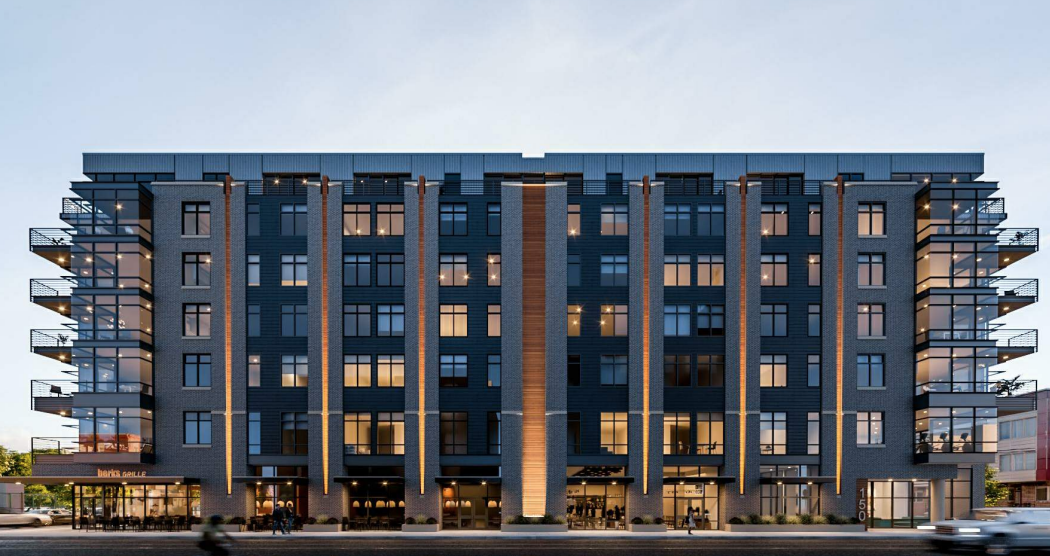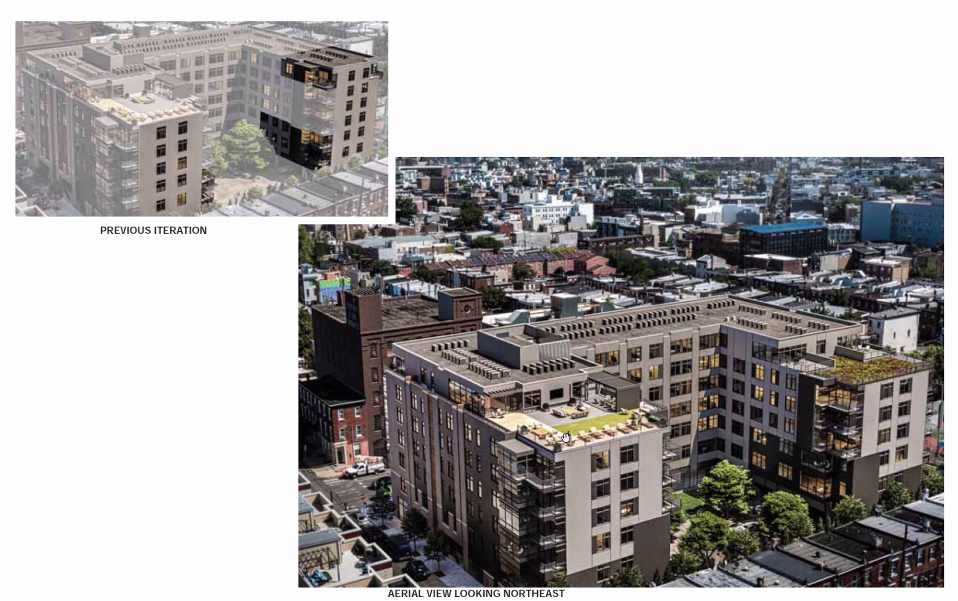Kensington transit-oriented development rejected variance at recommendation of councilmember | By Brandon Tubby

Plans for South Kensington’s upcoming mixed-use development remain in the air. The project at 150 W Berks, by Cecil + Moore, requested a variance to transform a vacant industrial lot steps from the Berks Street El into a transit-oriented community at the Zoning Board of Adjustment meeting on the 14th of April.
The project proposed 152 residential units, 42 off-street parking, and 77 indoor bicycle spaces. But legal counsel representing the project said they were “taken a-back” by Councilmember Maria D. Quinones Sanchez’s last-minute concerns regarding the proposal.
Now the ZBA would like to wait to hear out the district councilmember's thoughts.

150-64 W Berks received broad support from the South Kensington Community Partnership (SKCP), the Philadelphia City Planning Commission (PCP), and the Civic Design Review (CDR). The 7-story project looks poised to win a variance in its upcoming May 4 ZBA vote, transforming a dilapidated lot steps at the heart of one of Philadelphia’s most up-and-coming neighborhoods.
The project received initial criticism from the SKCP regarding its height, density, and lack of on-site affordability.
Pressure to reduce density reduced the project's floor-area ratio, according to Adam Laver, the project’s attorney from Blankrome LLP.
The development responded to the density push-back from SKCP and Quinones Sanchez’s office by revising the 7th floor with a significant set-back. A floorplan configuration was necessary to maintain the project’s 152-unit capacity but courtyard-facing balconies and bays on the 2nd and 3rd floor were subsequently eliminated by the revisions.
According to Laver’s testimony, additional concerns from Quinones Sanchez’s office were raised as late as yesterday. The nature of these concerns were not detailed by Laver or an official from Quinones Sanchez. The councilmember’s office is expected to release a letter before the May 4 vote clarifying their opinion.
Longtime resident Mark Prazak testified the reduction of FAR was a “big loss” and believes the city will be “regretting its regressive attitude towards height and density”, particularly in a neighborhood with abundant transit access.
“This is a one-minute walk from Berks Station,” Prazak said. “Unfortunately, somehow the RCO thinks this is a victory.”

Regarding affordability set-asides, Eileen Divringi, a representative from SKCP, testified the developer “indicated from the start” that they were not interested. The developer instead offered to fund a $100,000 grant program administered by SKCP to provide financial assistance to neighbors to make home repairs and resolve tangle-titles.
SKCP ultimately issued a signed letter of support, enjoying the presence of ground-floor commercial and the proximity to the Berks El station.
Additional support of the variance was voiced by the Ian Hegardy of the PCPC. Hegardy stated that the shallow groundwater conditions at the site support a hardship claim for building height. The hardship claim supporting residential use was not validated.
“Because the proposed uses are consistent with general recommendations from the comprehensive plan to encourage transit-oriented development and active ground floor uses, the City Planning Commission recommend the board grant this variance,” Hegardy said.
The Civic Design Review also praised the project for creating a “wonderful sidewalk environment” activated by ground-floor commercial space and adorned with tree trenches.
It would be difficult to imagine a variance denial for the site, unless Quinones Sanchez’s letter comes out strongly against the project. Its proximity to transit and ground-floor active commercial space are the project’s strongest and supported features, outweighing an RCO push for set-asides and weathering a FAR reduction.
